
Station Name: HULL CORPORATION PIER
|
| Date opened: | 1.3.1848 |
| Location: | Nelson Street |
| Company on opening: | Manchester, Sheffield and Lincolnshire Railway |
| Date closed to passengers: | 24.6.1981 |
| Date closed completely: | 24.6.1981 |
| Company on closing: | British Rail (Eastern Region) |
| Present state: | The Humber Ferry offices and terminal building remains intact with a blue plaque commemorating the Humber Ferry; the building has now been converted into apartments. The pier on the opposite site of the road has been substantially altered as part of a general modernisation and refurbishment of the area as a leisure resource. The floating pontoon has been removed. |
| County: | Yorkshire |
| OS Grid Ref: | TA100282 |
| Date of visit: | 5.2.2006 |
Having stood empty for many years the building has now been converted into apartments. The MSL trefoil device and construction date are still in place at the top of the building. The stone band above the lower windows originally carried the lettering 'MANCHESTER, SHEFFIELD & LINCOLNSHIRE RAILWAY' in relief but this was removed many years ago.
The Great Grimsby and Sheffield Junction railway were the first to propose a line to New Holland but before their plans came to fruition they had amalgamated with the Manchester, Sheffield and Lincolnshire Railway (later to become the Great Central).
Between New Holland, Lincoln and Grimsby the fabric of the lines was built for £36,000 and the line to New Holland was opened on 1st March 1848. The M&SL had a good working relationship with the Great Northern. The New Holland - Grimsby line opened on the same day as the GNR's first line, that from Grimsby to Louth. The MS&L allowed the GNR to run trains over its line in return for reciprocal running powers to Louth so the first service ran from New Holland - Louth. From the beginning, the trains went along the 1375 feet long New Holland pier built by John Fowler, it had two tracks, a carriageway and a footpath and a year later passengers disembarked on to the floating pontoon that eased the passage on to the ferries. Goods now transferred from waterways to the railways and passengers and mail came from the stage coaches. In the same year 1848, a Bill was proposed which could have had far-reaching consequences for railways in the area. This provided for a tunnel under the Humber, connecting with the railway lines on both the north and south banks. Although passed by the House of Commons, the Bill was rejected by the Lords.
Although there were two stations they were not listed as separate stations in the Railway Clearing House handbook until 1904 and Bradshaw didn't recognise them as separate stations until May 1945, many tickets just refer to New Holland. On 1st March 1849 a branch opened from a junction south of New Holland Town Station to Barton on Humber and in 1910 a branch opened from Goxhill one station south of New Holland to Immingham Dock, both branches were provided with a service from New Holland.
The initial service to and from New Holland consisted of five trains daily in each direction, with two each way on Sundays. By 1922 there were 14 daily trains between New Holland & Cleethorpes with 7 on Sundays, 12 daily trains between New Holland and Barton on Humber and 6 daily trains between New Holland and Immingham Dock.
If New Holland began with smuggling and the railway was born in corruption, the railway operation was no better when the Manchester, Sheffield and Lincolnshire Railway fell out with the Great Northern Railway which ran services from Louth. Ferries would sometimes leave just before the Great Northern Trains arrived at New Holland Pier station. Also the library in New Holland was financed by fines on railway employees.
In 1922 the original wooden pier was replaced by the present pier the three earlier vessels used on the service across the Humber were replaced by the three paddle-steamers Wingfleld Castle, Tattershall Castle, and Lincoln Castle between 1934 and 1940, these were built to take passengers and cars and a car ramp was provided at the end of the pier to drive cars down to the ferries. By closure of the station the service was operated solely by Sealink’s Farringford, a diesel-powered paddle ferry dating from 1947. The Branch to Immingham Docks closed in 17th June 1963, an early casualty under the Beeching cuts. In 1969 there was a proposal to close the service between Cleethorpes, New Holland and Barton on Humber but this was rejected by the Minister of Transport although the line between Grimsby & Louth closed from 5th October 1970. With the building of the Humber Bridge and the closure of the Humber Ferry the closure of the station at New Holland Pier came as no surprise. Work on the Humber Bridge, now the world’s largest single-span suspension bridge, began in 1972 and was scheduled for completion in March 1980. In mid-1979, therefore, British Railways Board gave advance notice of its intention to discontinue the service to New Holland Pier Station from the date of opening of the bridge including the withdrawal of passenger train services between New Holland Pier and Barrow Road Junction, and between New Holland Junction and Barton Junction.
After closure New Holland Pier was taken over by New Holland Bulk Services, who started a grain and animal food import and export business in 1984. New Holland Bulk Services is still rail connected although rarely used, the Barrow Road signalbox to the south of the station still stands.
timetable showed ten trains daily in each direction to Grimsby, with four (rising to six in summer) on Sundays. Normal journey time for the l6 miles from Grimsby to New Holland Pier was just under 40 minutes. The ferry service,across the last great waterway in Britain to be bridged, took an additional twenty minutes. Sources: Railway Magazine, October 1981 and New Holland: 1803 until the Present Day from Pluralist web site. Tickets from Michael Stewart See also: River Humber Ferries web site & History Of The Humber Ferry - Monarchs Of the River Humber (DVD) See also New Holland Pier & New Holland Town stations |
pier_old9.jpg)
Copyright picture from John Alsop collection

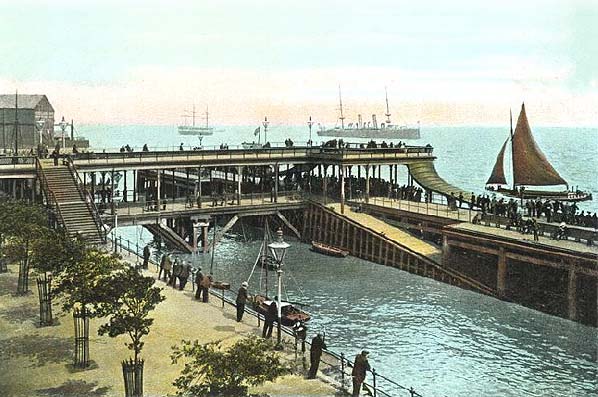
pier_old5.jpg)
Photo received from Nick Cox
pier_old1.jpg)
Photo by John Law from his Everything on Rails web site
pier_old3.jpg)
Photo by Geoffrey Skelsley from Tramway Resources web site
pier2.jpg)
apartments, seen here in February 2006.
Photo by Mark Dyson
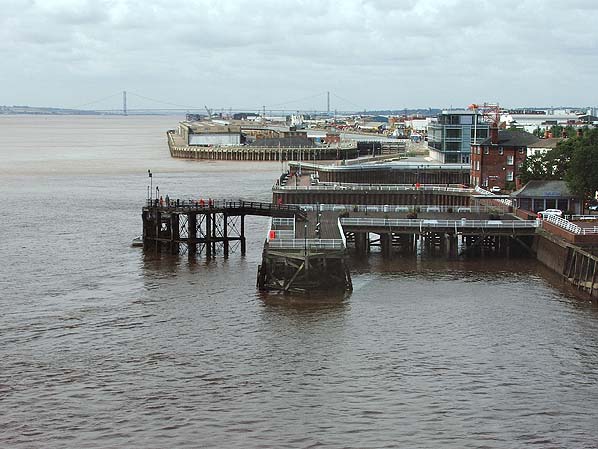
 |
| Last updated: Sunday, 21-May-2017 11:19:03 CEST | © 1998-2009 Disused Stations |
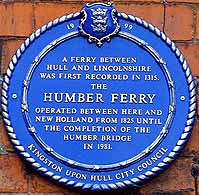
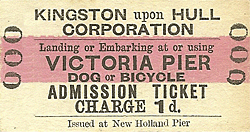
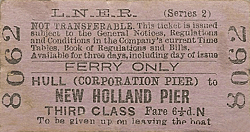
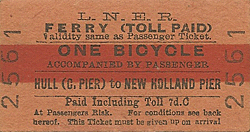
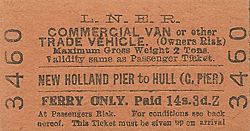
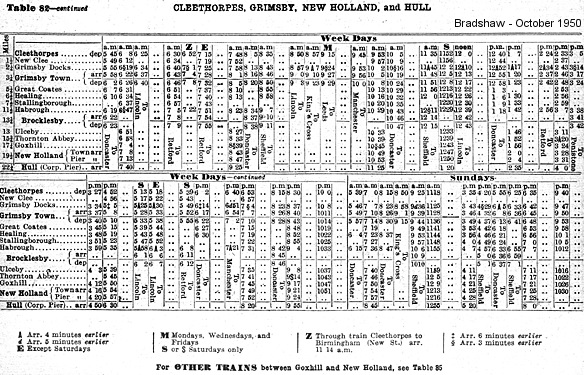
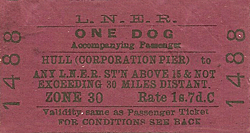
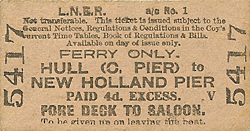
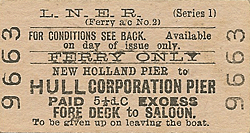
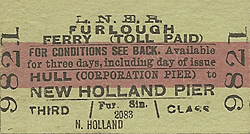
pier_old_thumb8.jpg)
pier_old_thumb6.jpg)
pier_old_thumb11.jpg)
pier_old_thumb12.jpg)
pier_old_thumb10.jpg)
pier_old_thumb4.jpg)
pier_old_thumb7.jpg)
pier_old_thumb2.jpg)
pier_thumb3.jpg)
pier_thumb4.jpg)
 Home Page
Home Page